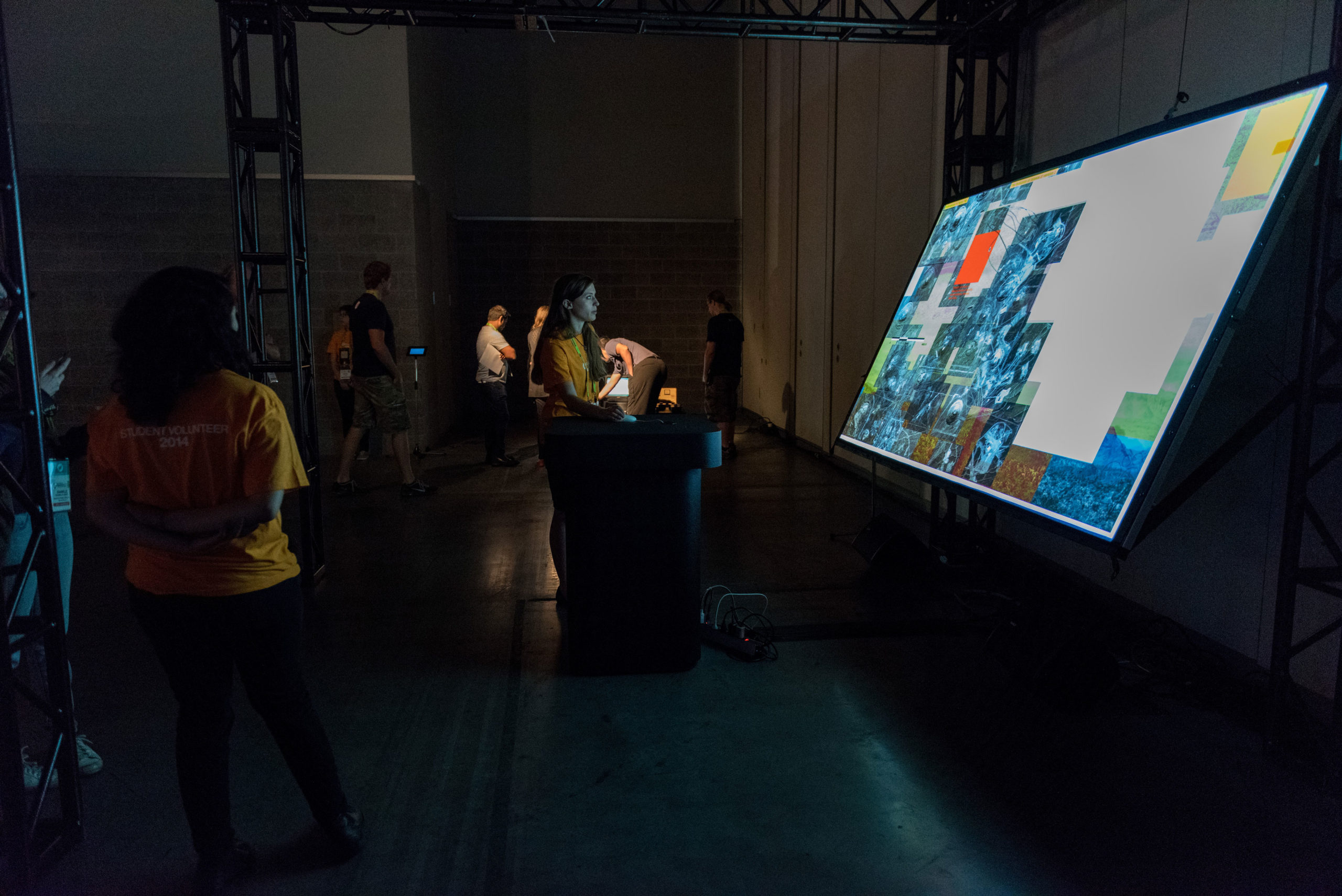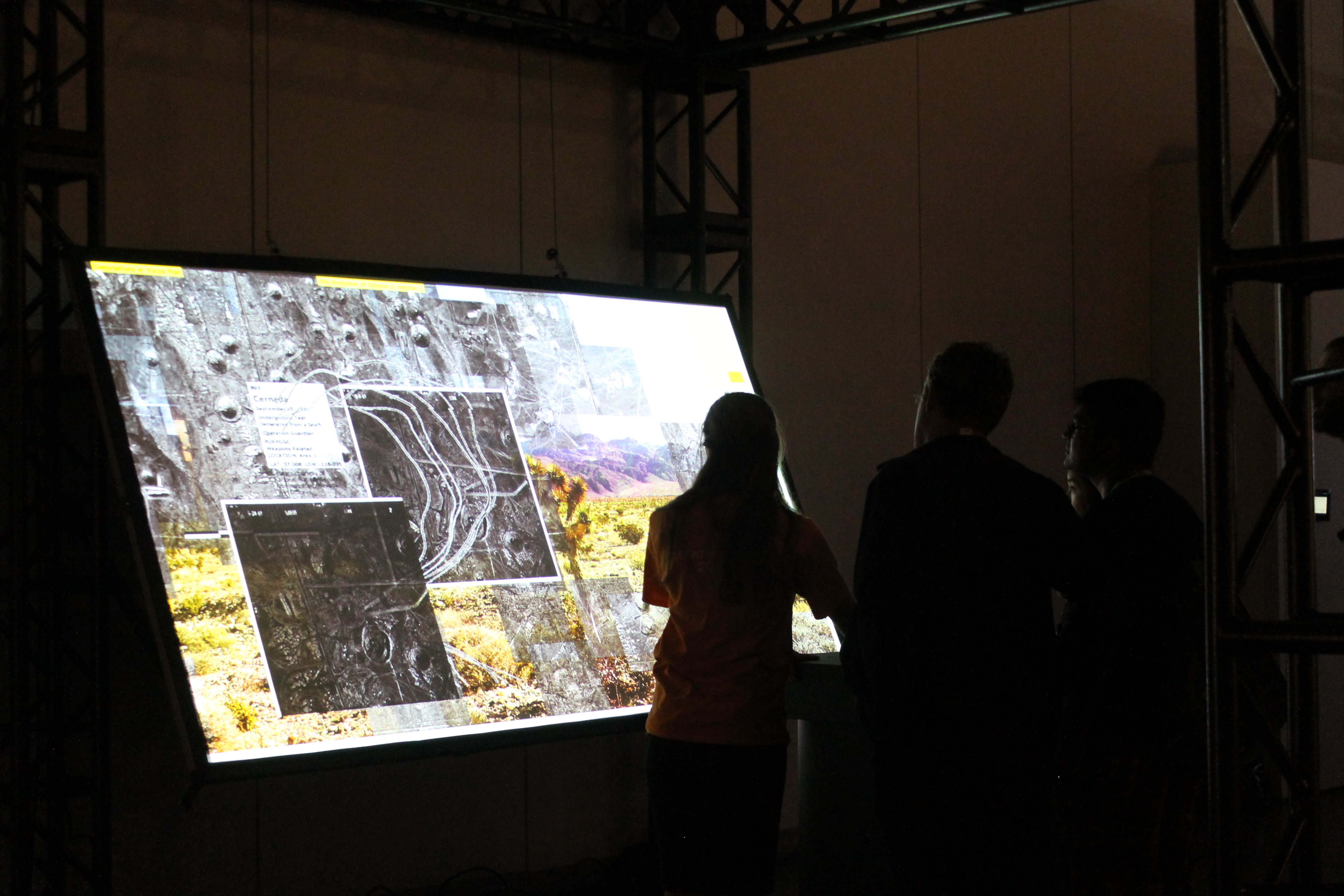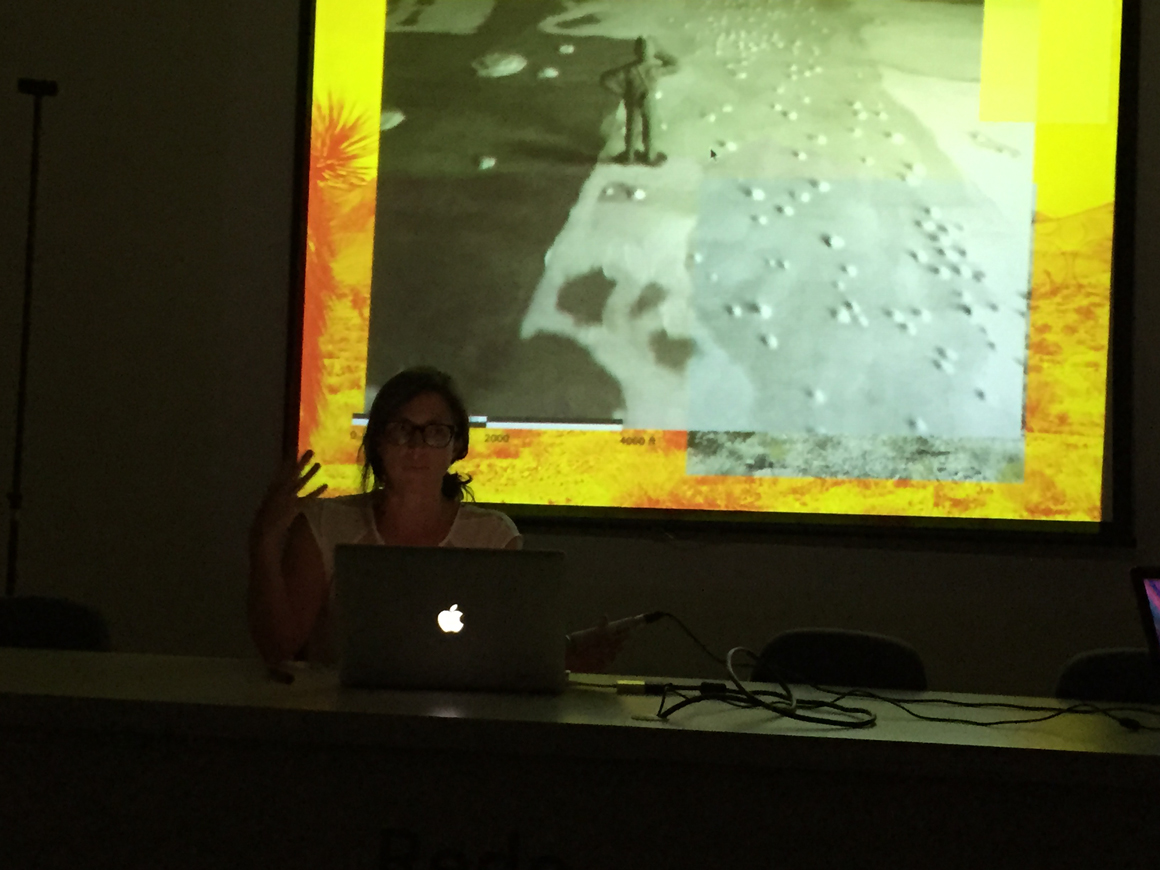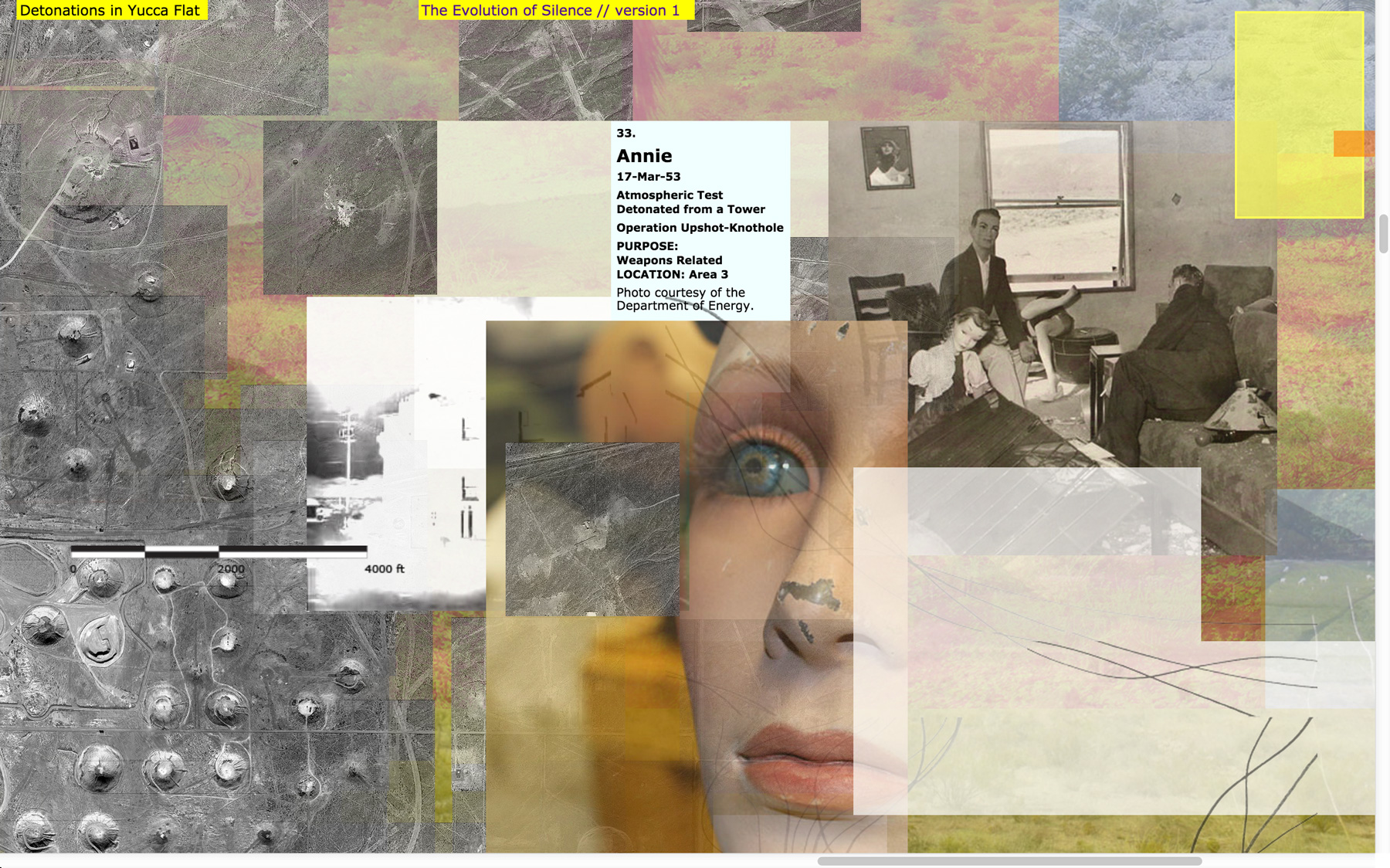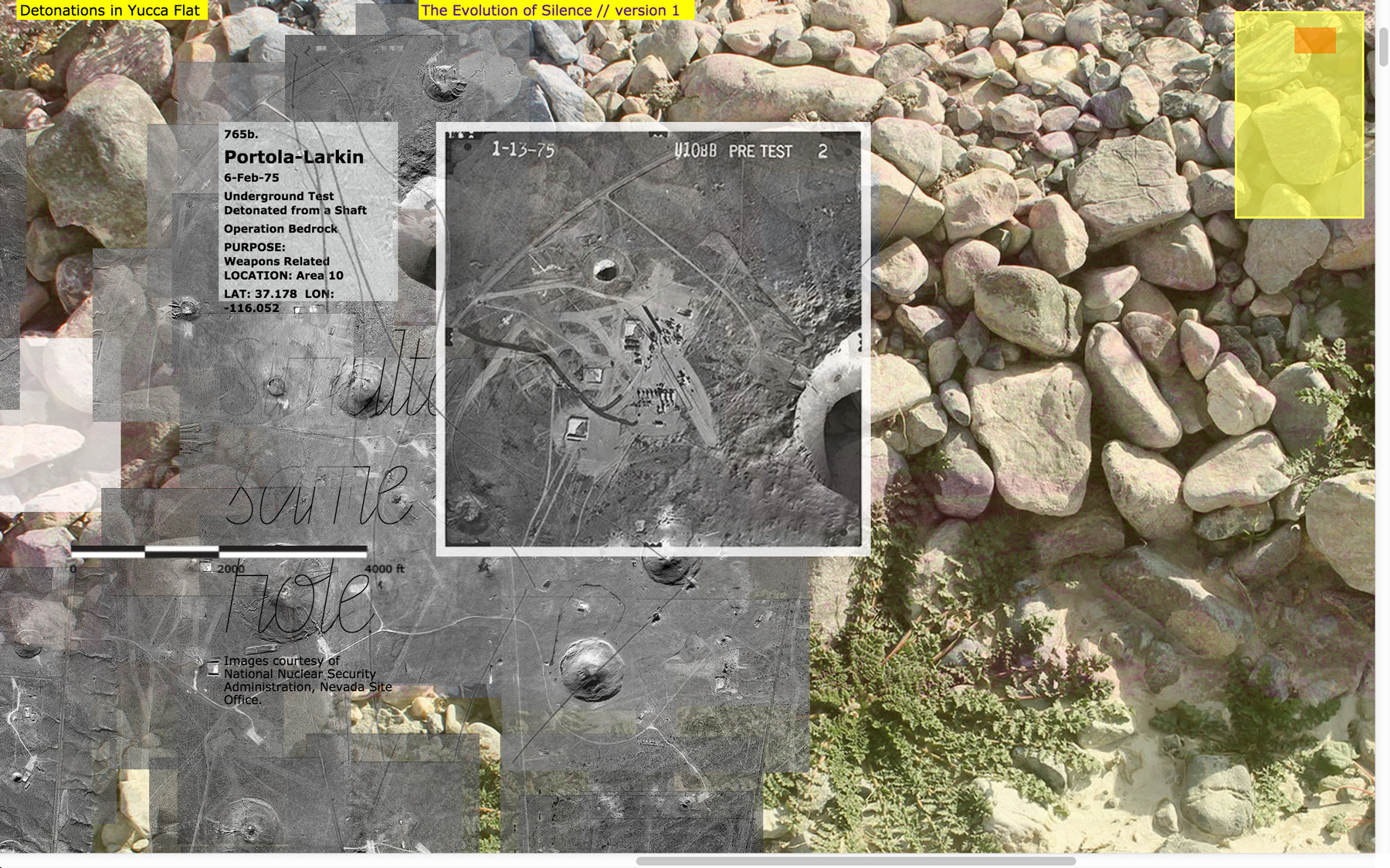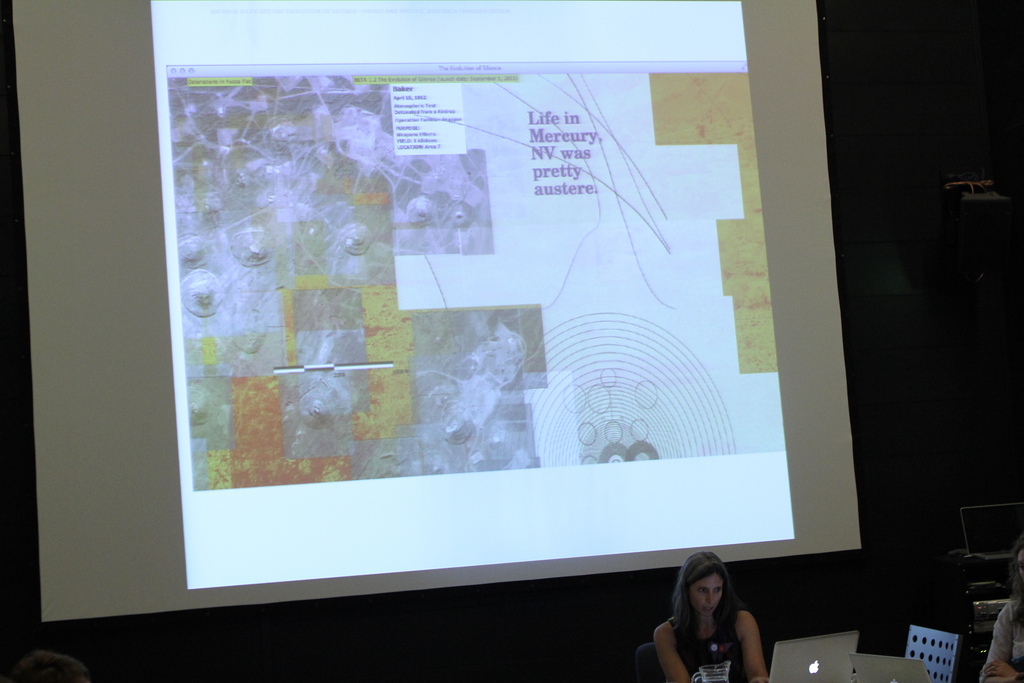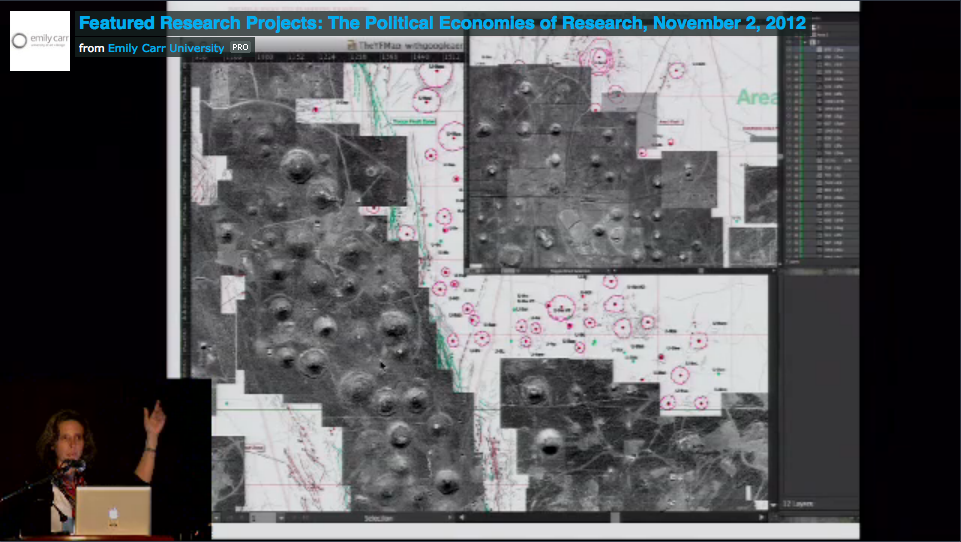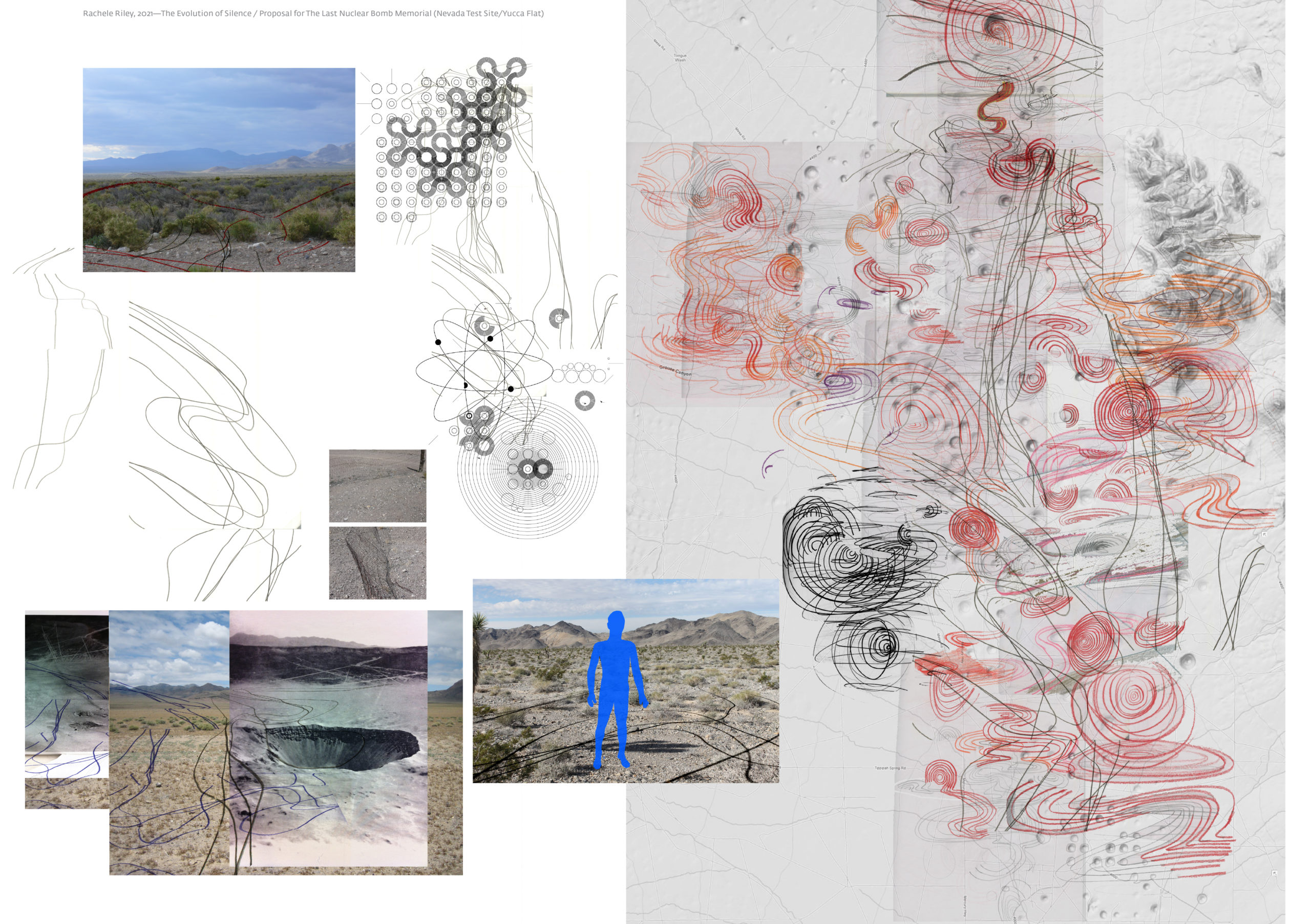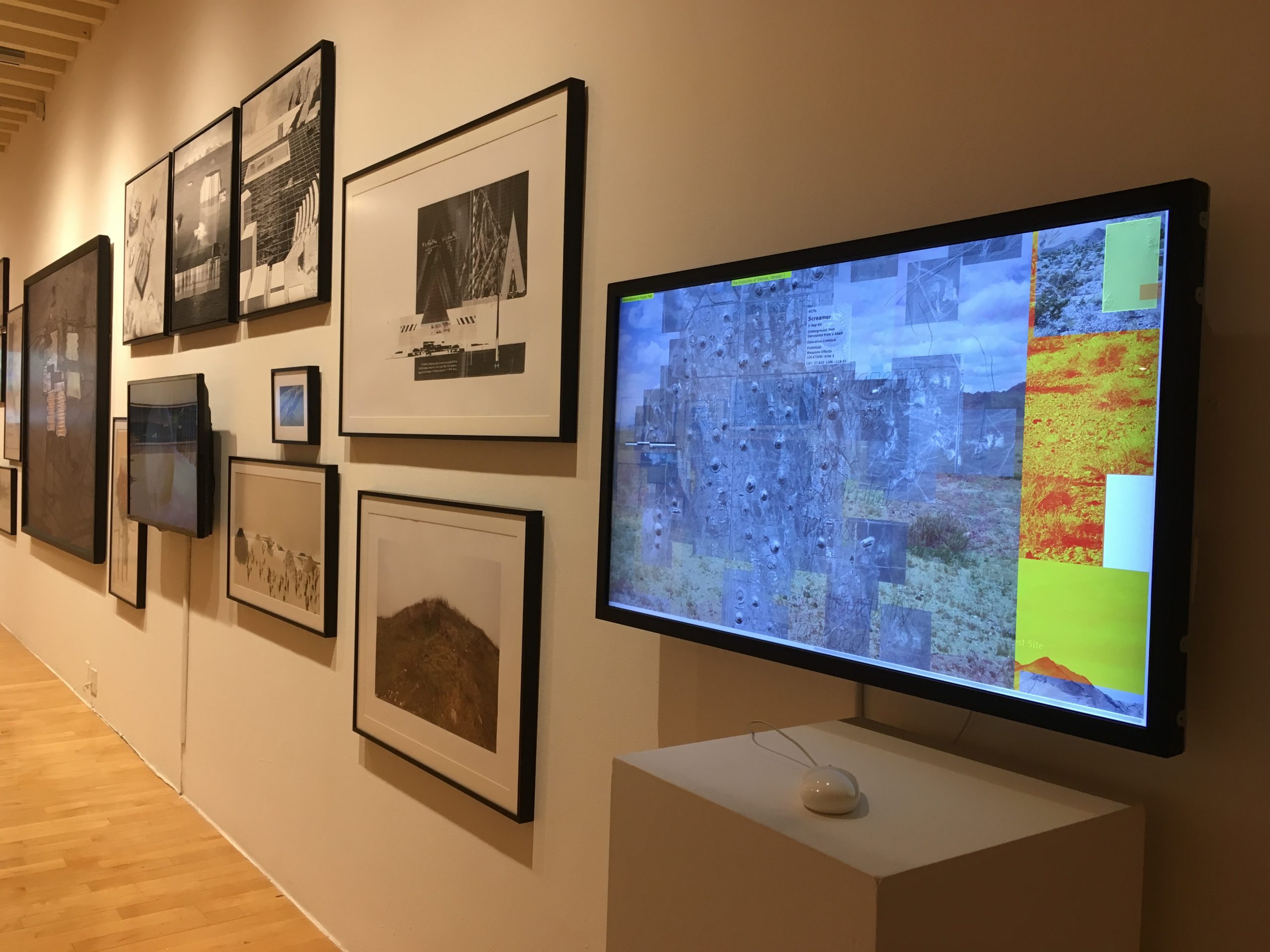
project
The Evolution of Silence is a multimedia research project by Rachele Riley, examining the visual representation of contested landscape and the impact of nuclear bombing at Yucca Flat within the Nevada Test Site.
Web-based map (HTML, CSS, jQuery), interactive and data-driven graphics, animation, sound, archival and original imagery, writing, typography,
The Evolution of Silence, Version 1 (V1) is a web-based map, which explores the impact of forty-one years of post-WWII nuclear testing at the Nevada Test Site (a remote and contested landscape, located in a highly-restricted area 65 miles north of Las Vegas, NV). The map focuses on Yucca Flat, a long valley within the Nevada Test Site, which is marked by hundreds of sinkhole craters caused by underground nuclear explosions.
The web-based map is a multi-layered exploration of the data of conflict and the dynamics of transformation. Layers reveal disorienting views of the land, the plants, and of government activity. The map visualizes the individual locations of each of the 828 nuclear detonations which occurred in Yucca Flat. The official data from the U.S. Department of Energy is combined with other kinds of expressive data—my drawings, photos, videos, sounds, writings, animations. Satellite images, supported through a grant from the DigitalGlobe Foundation, form a reconstructed aerial view of the valley floor. The tiled image composition points to the areas in which a detonations occurred. The viewer is able to dismantle the composite image of the aftermath—manually “clicking and dragging’ the image tiles, one can rearrange and separate the detonation sites from one another on screen. One is challenged to make sense of the scale of violence that occurred, and invited to conceptually reclaim this contested space through an experience of knowing and caring. Bypassing U.S. government restrictions on the Nevada Test Site area which limit access and representation, the project allows anyone to engage empathetically with this landscape and to reflect on the toll of war.
Project websites:
→ www.evolution-of-silence.net/
→ blog.racheleriley.com/
credits
copyright © Rachele Riley, launched 2013, last update 2025 (art, design, concept, research, project direction). All rights reserved.
Special thanks to Danniel Gaidula (technical consultant).
awards
Official Honoree in Net Art, The Webby Awards, 2014
AIGA Philadelphia Design Awards, 2017
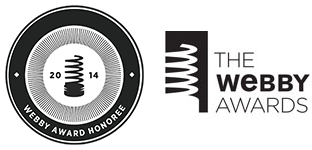
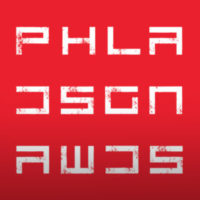
→ Published in exhibition catalog for Ambiguous Territory book, Actar Publishers, New York, NY & Barcelona, Spain, 2022
→ Exhibition at Handwerker Gallery at Ithaca College, Ambiguous Territory (traveling), Ithaca, NY, 2019-20
→ Exhibition at Pratt Manhattan Gallery, Ambiguous Territory (traveling), New York, NY, 2018–19
→ Exhibition at University of Virginia, Ambiguous Territory (traveling), Charlottesville, VA, 2018
→ Published in The Architect’s Newspaper, review of Ambiguous Territory exhibition, 2017
→ Award Recipient from the AIGA Philadelphia Design Awards, 2017
→ Exhibition at Taubman Gallery at Univ. of Michigan, Ambiguous Territory: Architecture, Landscape, and the Postnatural, Ann Arbor, MI, 2016
→ Exhibition at SIGGRAPH, Data Materialities, Vancouver, Canada, 2016
→ Exhibition at Weeks Gallery, Artifact and Process: The Evolving Field of Graphic Design, Jamestown, NY, 2016
→ Presentation at Mapping Ephemeralities, Rio de Janeiro, Brazil, 2015
→ Published in Studies in Material Thinking, Special Issue: Visual/Textual, Vol.13, Auckland, New Zealand, 2015
→ Discussion on EuDesignRadio, Milan, Italy, May 6, 2015
→ Award Recipient from the The Webby Awards (Official Honoree in NetArt), 2014
→ Published in Leonardo Journal Vol. 47, Issue 4, Special SIGGRAPH Issue, 2014
→ Presentation at SIGGRAPH 2014 Art Gallery Talks, Vancouver, Canada, 2014
→ Exhibition at SIGGRAPH, Art in Translation, Vancouver, Canada, 2014
→ Presentation and exhibition at Praxis and Poetics: Research Through Design, Baltic Centre for Contemporary Art, Newcastle-upon-Tyne/Gateshead, UK, 2013
→ Imagery Grant Recipient from the Digital Globe Foundation, 2012
→ Presentation at AICAD Symposium Remaking Research/The Political Economies of Art and Design Research Panel, Vancouver, Canada, 2012
- The Evolution of Silence (launched 2013)
- Exhibition at SIGGRAPH, 2014
- Exhibition at SIGGRAPH, 2014
- (detail) The Evolution of Silence
- Presenting The Evolution of Silence at Mapping Ephemeralities in Rio de Janeiro, 2015
- Launch at Praxis and Poetics in UK
- Presenting at AICAD Symposium
Thank you to a number of organizations for your funding support over the years: the University of North Carolina Charlotte, the University of the Arts in Philadelphia, the DigitalGlobe Foundation, the University of Illinois Urbana-Champaign, and the University of North Carolina Greensboro.
Special thanks to my friends and family who made individual contributions via Hatchfund to directly support this project at its initial launch phase in 2013: Richard Felton, Lisa M. C. Joven, Jerome Cloud, Hans-Ulrich Allemann, Erin Riley, Nonie Kimpitak, Paul Riley, Millie Riley, Patrycja Doniewski, Marjorie Halstead, Maria McVarish, JoAnne R. Baron, Thomas Balsley, Bonnie Willett-Goad, Stacie Goffin, Mark Jamra, Elizabeth Craig, Ron Johnson, Sean Riley, Je Seok Koo, John Connolly, Laurence Bach, Maia Wright, Christine Zelinsky, Tina Thuermer, Gabrielle Esperdy, Afua Brown, Jan C. Almquist, Sara Abraham, Miriam Simun, Margaret Urban, Tulin Acikalin, Anna Bühler, Jason Dilworth, Janet Williams, Joshua Singer, Andrea Weissenbuehler, Virginia Faircloth, Lindsey Culpepper, Eleanor J. Edgett, Bizhan Khodabandeh, Teresa Ilnicki, C.J. Hawn, Debby and John Hanrahan, Warren Lehrer, Semi Ryu, Marcie Paper, Sandra Maxa, Kaitlin Gehshan, Jennifer Sudul-Edwards, Derek Coté, Alex Wagaman, Joseph Poccia, and Ben Kuyper.
Archival photos, maps, documents and artifacts are courtesy the U.S. Department of Energy, United States Geological Survey, National Nuclear Security Administration, Nevada Test Site Historical Foundation, Las Vegas News Bureau, Cahlan Research Library (Nevada State Museum), Special Collections Library at the University of Nevada Las Vegas, Nuclear Testing Archive, National Atomic Testing Museum, National Archives, and Library of Congress.
affiliated projects
Annie Scanner
Version 2 Generative video
and
The Last Nuclear Bomb Memorial Proposal, 2021
Concept design drawing and proposal for an entangled and confounding path through Yucca Flat (Nevada Test Site).

